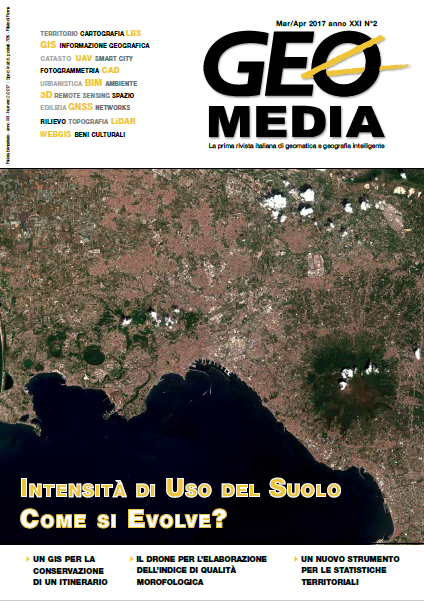La CSS ISTAT: un nuovo strumento per le statistiche territoriali
Parole chiave:
ISTAT, Enumeration areas, Census project, ARCGIS 10.1, Land cover, Land useAbstract
ISTAT (Italian National Institute of Statistics) geographic datasets, updated
to realize ‘Census 2010' project in October 2011, represents a useful resource
to improve information derived from Land cover/use cartography.
In fact both ISTAT vector data and other cartography data (i.e. Regional
Land cover/use geographic datasets) can be integrated to realize a product
that can help to better understand statistics linked to land cover cartography.
Thematic maps like this are also useful to examine and describe a lot of phenomena linked to territorial dynamics especially in urban environment (i. e.urban sprawl). This paper summarizes an ISTAT project that has the aim to produce, a ‘Statistics Synthetic Map' for the entire national Italian territory; it has realized yet for five Italian regions (Emilia-Romagna, Valle d'Aosta, Latium, Lombardy, Umbria, and Basilicata and Marche). In brief, the final product represents integration among geographic datasets and it is based on ISTAT enumeration areas that are so described not only in relation to statistical character (i.e. resident population, buildings, etc.) but land cover/use too.
The legend of the map is based on 80 classes.
Riferimenti bibliografici
BT ISTAT - http://www.istat.it/it/archivio/104317
Mugnoli S., Chiocchini R. ‘Land Cover and Census integration geographic
datasets to realize a statistics synthetic maps' – EFGS 2014 Conference
(Krakow, 22nd - 24th October 2014)
Lombardo G., Esposto A., Minguzzi R., Mugnoli S. – ‘La CSSCS ISTAT:
un nuovo strumento per le statistiche territoriali' – Conferenza ESRI Italia
(Roma, 15 – 16 Aprile 2015)
ISTAT ‘Anagrafe della popolazione: legge e regolamento anagrafico –
Avvertenze, note illustartive e normativa AIRE' – Metodi e norme serie
B – n.29 edizione 1992.
##submission.downloads##
Pubblicato
Come citare
Fascicolo
Sezione
Licenza
Gli autori che pubblicano su questa rivista accettano le seguenti condizioni:- Gli autori mantengono i diritti sulla loro opera e cedono alla rivista il diritto di prima pubblicazione dell'opera, contemporaneamente licenziata sotto una Licenza Creative Commons - Attribuzione che permette ad altri di condividere l'opera indicando la paternità intellettuale e la prima pubblicazione su questa rivista.
- Gli autori possono aderire ad altri accordi di licenza non esclusiva per la distribuzione della versione dell'opera pubblicata (es. depositarla in un archivio istituzionale o pubblicarla in una monografia), a patto di indicare che la prima pubblicazione è avvenuta su questa rivista.
- Gli autori possono diffondere la loro opera online (es. in repository istituzionali o nel loro sito web) prima e durante il processo di submission, poiché può portare a scambi produttivi e aumentare le citazioni dell'opera pubblicata (Vedi The Effect of Open Access).





